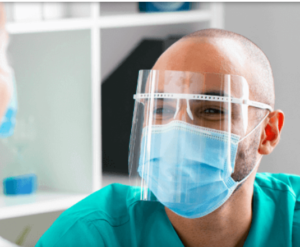 Restart Spirometry
Restart Spirometry
5 Key Considerations For Restarting Lung Function Testing
The impact of the COVID-19 pandemic has affected all areas of healthcare, including pulmonary
function testing services which have either been greatly reduced or stopped entirely. The re-starting of
these services requires urgent action so that we can resume the management of respiratory disease
through correct diagnosis and therapeutic / referral interventions.
Patients with respiratory conditions and those who display symptoms have received the best possible
care and management that has been allowed during this time. However, with diagnosis often
dependent on spirometry testing, some provisional diagnoses have seen prescribed medication and
disease management strategies that may not be required during the wait for spirometry testing3.
Similar principals apply to post-COVID recovery patients and the monitoring of their lung function with
both spirometry and Dlco testing.
While tele-monitoring from home has become more common for lung function monitoring of confirmed cases of respiratory disease, the backlogs for pulmonary function testing have been building steadily throughout the pandemic.
International guidance on the considerations for resuming pulmonary function services and testing post-COVID has been reasonably consistent. The top 5 key points to consider when re-starting are:
1. Do the benefits outweigh the risk?
When considering the re-start of testing, thought should be given to whether the clinical need and the potential benefits of testing outweigh the risks posed by performing the test. Consideration should also be given to prioritizing groups of patients, with a focus on those for whom pulmonary function testing will potentially impact their treatment pathway or determine
their onward care.
2. Is there a need for pre-test COVID screening?
International respiratory organization recommend that some institutions may prefer a strategy of testing for SARS-CoV-2 in all patients who are scheduled to undergo PFTs. This could also include the use of pre-attendance questionnaires.
3. Appropriate PPE and room ventilation.
Patients should be instructed in cough etiquette and wear a surgical mask as much as possible to avoid aerosol dispersion, while staff should wear appropriate PPE. Adequate room ventilation is strongly advised. If available use a room under negative pressure or with mechanical air circulation or ventilate as able (i.e. open windows). Ideally, recommendations suggest that there should be in the region of 6 room air changes per hour.
Along with both patients and staff maintaining a safe distance from one another, a barrier screen between patient and operator offers an additional physical barrier. Both patients and operators should wash their hands before and after testing.
We have adapters for most units
4. Use an in-line BVF during testing.
Guidance insists on all testing being performed using a single use bacterial/viral in-line filter. This is to prevent bacterial or viral transfer to equipment or into the testing environment. The
recommendations also state that the bacterial/filter provide minimum proven efficiency for high expiratory flow of 600 to 700 L/min4. Vitalograph Bacterial Viral Filters (BVFs) have a validated cross-contamination efficiency of 99.999% across flow ranges of <50L/min and >750L/min5,6.
5. Disinfect the testing room between patients.
Between patients, the testing room should cleaned/disinfected as per local infection control policies. This is to further reduce the chances of cross-infection.
References:
1. ANZSRS (2021); Update on Lung Function Testing (online – https://www.thoracic.org.au/documents/item/2012 ) <accessed on:
24/06/2021>
2. ATS Workshop Report – Restoring Pulmonary and Sleep Services as the COVID-19 Pandemic Lessens (2020); Ann Am Thorac Soc
Vol 17, No 11, pp 1343–1351 DOI: 10.1513/AnnalsATS.202005-514ST
3. BTS/ARTP/PCRS; Risk minimisation in spirometry re-start (online – https://www.brit-thoracic.org.uk/covid-19/covid-19-resumption-
and-continuation-of-respiratory-services/ ) <accessed on: 24/06/2021>
4. ERS Group 9.1 (2020); Recommendation from ERS Group 9.1 (Respiratory function technologists /Scientists) Lung function testing
during COVID-19 pandemic and beyond. Available online: https://panafricanthoracic.org/images/pdf/African_Paeds_LF/COVID-19/
ERS_91_Statement_on_lung_function_during_COVID-19_Final_with_Contributors.pdf <accessed on: 24/06/2021>
5. Dunne, C (2019). “Calibrated Flow Bioburden testing of Vitalograph Alpha Flow Heads” Dated 16 July 2019. Report for Vitalograph
Ireland Ltd.
6. Bentz, J. R. (2019) “Viral Filtration Efficiency (VFE) at an Increased Challenge Level Final” Report for Vitalograph Ireland Ltd dated
17 January 2019. Study Number 1138680-S01. Salt Lake City. Nelson Laboratories.
7. Rutala, W. A., D. J. Weber and HICPAC (2008). “Guideline for Disinfection and Sterilization in Healthcare Facilities.” CDC Infection
Control Accessed 28 May 2019, from https://www.cdc.gov/infectioncontrol/guidelines
